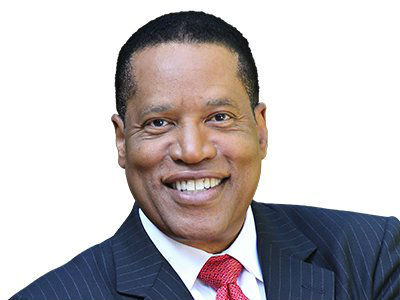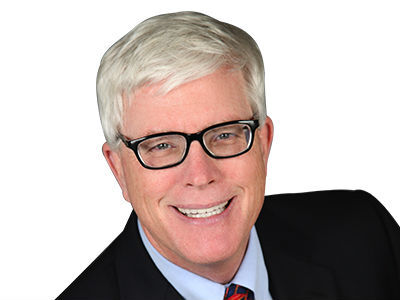Anglican Graffiti and the Power of Beauty
BreakPoint Daily Commentary


Audio By Carbonatix
By John Stonestreet and Timothy D Padgett, Crosswalk.com
Earlier this year, police in Australia arrested two men for vandalizing a sacred indigenous site with graffiti. The spray-painted damage was over 30 feet wide and six feet high. A Facebook user reacted, “They’ve got some nasty nasty ju ju [sic] coming their way for this disrespectful vandalism. Ancestors know who they are.”
Earlier this month, Canterbury Cathedral received a similar graffiti treatment. No one was arrested, however, since it was done by permission of cathedral officials. According to “visual arts advisor and curator” Jacquiline Creswell, the graffiti “is giving the marginalised community of Canterbury a voice within the cathedral putting profound questions to God.” And here I thought that was what the Psalms were for…
Canterbury is not any other church building in Europe. It is the church from which Christianity spread throughout England. In the 500s, after pagan Anglo-Saxon tribes had overrun the older Celtic Christian regions, missionaries came to the “barbarian” kingdom of Kent in the southeast of England to share the Gospel. Their leader, known to history as Augustine of Canterbury, converted King Aethelbert and built Canterbury Cathedral as the first church for the English. Millions of Christians came to faith through the missionary efforts first sparked at Canterbury. It remains the mother church of the now-fractured worldwide Anglican Communion and the Church of England.
The new “spray paint” installation stands in stark contrast to the ancient medieval graffiti that can still be seen on the walls of the crypt. The barely readable sketchings point to Christ, His crucifixion, and to the martyrs. According to one visitor, the new installation makes the beautiful cathedral resemble “an underground car park.”
Last year, reacting to the funeral of a transgender prostitute activist at St. Patrick’s Cathedral in New York City, Carl Trueman introduced an essential thought category to understand this cultural moment:
Our age is not marked so much by disenchantment as by desecration. The culture’s officer class is committed not merely to marginalizing that which previous generations considered sacred. It is committed to its destruction. Disenchantment has passive connotations, a dull, impersonal, somewhat tedious but inevitable process. But desecration speaks to the exultation that active destruction of the holy involves.
Trueman echoes here a scene from the C.S. Lewis novel, That Hideous Strength. To be initiated into an evil conspiracy, the protagonist is told to desecrate a crucifix. Though not a Christian, he hesitates. However, the conspirators insist that going against what is thought to be holy is the only way forward.
The sociologist Charles Taylor described a trait of modernism as “disenchantment.” As the Western world lost its faith in God, it necessarily rejected the transcendent. However, disenchantment cannot adequately describe the rejection of beauty and commitment to transgression that has characterized so much of modern culture.
In The God Who Is There and How Should We Then Live?, Francis Schaeffer predicted that the loss of “Christian consensus” would make our lives uglier. To illustrate, Schaeffer told how Ingmar Bergman, when writing a film to portray the meaninglessness of life, was troubled by a piece by Bach playing in the background. The order, beauty, and transcendence of the Christian composer’s work undermined the vision of chaos he was trying to prove.
In a desecrated age like ours, beauty will be denied, mocked, or caricatured. For example, when young people harm, subvert, or even mutilate their bodies, they are not merely adopting a different style. They are desecrating what is sacred. Ironically and unwittingly, to desecrate beauty is to presume that there is beauty to be desecrated. The graffiti on the walls of Canterbury only shock because it is on those majestic walls in that majestic cathedral.
In a 1798 essay, Johann Wolfgang von Goethe claimed, “The highest demand that is made on an artist is this: that he be true to Nature, study her, imitate her, and produce something that resembles her phenomena.” In fact, Christians know that beauty has the potential to point to something even beyond Nature. Beauty is a way to acknowledge and protect and celebrate what is sacred. It is a way, in fact, to point to the One who spoke all of Nature into existence and infused it with sacredness.
Photo Credit: V2f/Unsplash
John Stonestreet is President of the Colson Center for Christian Worldview, and radio host of BreakPoint, a daily national radio program providing thought-provoking commentaries on current events and life issues from a biblical worldview. John holds degrees from Trinity Evangelical Divinity School (IL) and Bryan College (TN), and is the co-author of Making Sense of Your World: A Biblical Worldview.
The views expressed in this commentary do not necessarily reflect those of CrosswalkHeadlines.
BreakPoint is a program of the Colson Center for Christian Worldview. BreakPoint commentaries offer incisive content people can't find anywhere else; content that cuts through the fog of relativism and the news cycle with truth and compassion. Founded by Chuck Colson (1931 – 2012) in 1991 as a daily radio broadcast, BreakPoint provides a Christian perspective on today's news and trends. Today, you can get it in written and a variety of audio formats: on the web, the radio, or your favorite podcast app on the go.


























